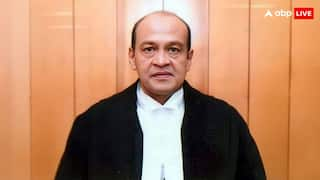How India Became Polio-Free A Decade Ago, And Has Maintained The Status Despite Enormous Population
World Polio Day: India eradicated wild polio through improved surveillance, vaccination, community education. India's multi-pronged approach serves as a blueprint for global polio eradication efforts.

By Deepak Kapur
Ten years ago, India achieved what many thought was an impossible feat. On March 27, 2014, the World Health Organization certified the entire Southeast Asia region, including India, as wild polio-free. This remarkable turnaround changed a nation once considered the epicentre of the debilitating disease into a successful model for global health efforts.
This World Polio Day, a decade after being certified wild polio-free, is fitting to reflect on India's journey and its ongoing fight to maintain its polio-free status. The question to revisit is how India, with its enormous population, managed to eradicate polio. India managed to reach even the most inaccessible communities through improved surveillance techniques, the power of vaccines, community education, micro-planning strategies for routine immunization, and a multi-actor system involving government officials, NGOs, local volunteers, and international organisations. Now, to continue to keep polio at bay, we must remain vigilant.
New Challenges At Home And Abroad
In order to safeguard the polio-free status we worked so hard to achieve, India continues to hold yearly national and sub-national immunisation days, making sure every child is protected. India even integrated the injectable Inactivated Polio Vaccine (IPV) into routine immunisation.
Nevertheless, new challenges abound.
For example, the recent detection of two variant poliovirus cases in India has sent ripples through the public health community. Variant polioviruses can emerge in areas where overall immunisation levels are low, and the live weakened virus used in the oral polio vaccine (OPV) begins to circulate in the environment and regain strength.
To combat this emerging threat, India has intensified its efforts. The National Polio Surveillance Project (NPSP) has initiated special surveillance measures, with a focus on immunodeficient children who are at higher risk of contracting and spreading variant polioviruses. The introduction of the new novel oral polio vaccine type 2 (nOPV2) vaccine in other parts of the world, has also helped in addressing variant poliovirus type 2 outbreaks because these re-engineered vaccines are more genetically stable and less likely to revert into a form that can cause paralysis.
It is important to recognise that India's efforts are part of a larger global initiative. Our success contributes to, and is influenced by, the worldwide campaign against polio. While the world has seen a 99.9% reduction in polio cases since 1988, thanks to global vaccination efforts, only two countries remain wild polio-endemic: Afghanistan and Pakistan. Worryingly, Afghanistan has seen an increase in wild poliovirus cases, with 22 reported in 2024 alone compared to six in 2023. This surge is attributed to several factors, including persistent gaps in vaccination coverage due to years of conflict, humanitarian crises affecting healthcare delivery, and challenges in reaching children in conflict-affected areas. The spike poses a potential threat to India's polio-free status, given the risk of virus importation. The situation in Pakistan, too, is alarming.
India also faces several other challenges in maintaining its polio-free status. These include sub-optimal immunisation levels in 270 revenue districts across the country, and a national average of polio immunisation at 90%, leaving 10% of the 26 million children cohort unvaccinated.
India's Multi-Pronged Approach: A Blueprint For Global Eradication
These current obstacles are not unfamiliar territory for India. Back in 1994, when India launched its PolioPlus Immunisation Programme, the country was home to a whopping 60% of the world's polio cases, and the challenges India faced mirror some of those currently seen in countries such as Afghanistan and Pakistan.
At the time, the odds seemed stacked against us: high population density, poor sanitation, widespread diarrhoea, inaccessible terrain, and vaccine hesitancy. India launched an aggressive immunisation campaign, ensuring equitable access to vaccines for everyone, including the most marginalised groups in the remotest parts of the country.
Other approaches to overcome the obstacles included:
Multi-level collaboration: India's success in polio eradication stemmed from society-wide commitment. Policymakers, health workers, volunteers, and organisations worked together to vaccinate every child. Partnerships between the government, Rotary clubs, WHO, and UNICEF were crucial. Rotary International, a leader in global polio eradication since 1985 with its PolioPlus programme, became a founding partner of the Global Polio Eradication Initiative in 1988. Rotary's advocacy has been instrumental in securing over $10 billion in government contributions to the cause. Moreover, Rotary International has directly contributed more than $158 million to polio eradication efforts in India.
Innovative micro-planning: These plans provided detailed data about specific areas, including vaccination team coverage, personnel assignments, and logistics distribution.
Addressing social and cultural concerns: The stakeholders worked closely with local communities, engaging religious leaders and community influencers to combat vaccine hesitancy.
Holistic health approach: Recognising that children suffering from severe diarrhoea did not fully benefit from the oral polio vaccine, community mobilisers expanded their focus. They began promoting handwashing, hygiene, sanitation, oral rehydration therapy, and routine immunisation.
Workforce mobilisation: To reach the target of 172 million children, India mobilised an army of nearly two million health workers. Operating from more than 5,000 stations, these individuals visited millions of homes to administer vaccinations.
Innovative communication strategies: India leveraged celebrity endorsements and ran extensive advertising campaigns in print media and over the radio to encourage vaccine uptake.
Technological advancements: The introduction of the bivalent oral polio vaccine in 2010 was a game-changer. Unlike the previous monovalent vaccine that only protected against type 1 poliovirus, the bivalent vaccine addressed both type 1 and type 3.
The success story of India's polio eradication programme makes it a valuable blueprint for global polio elimination efforts. It's a story of innovation, perseverance, and most importantly, of people coming together for a common cause. The principles of immunisation shaped by the fight against polio continue to influence India's approach to public health challenges.
Deepak Kapur is Chair, India National Polio Plus Committee, Rotary International.
[Disclaimer: The information provided in the article, including treatment suggestions shared by doctors, is intended for general informational purposes only. It is not a substitute for professional medical advice, diagnosis, or treatment. Always seek the advice of your physician or other qualified healthcare provider with any questions you may have regarding a medical condition.]
Check out below Health Tools-
Calculate Your Body Mass Index ( BMI )
Calculate The Age Through Age Calculator
Related Video
Breaking: ED Busts UP Cough Syrup Smuggling Network, ₹400 Crore Fake Firms Scam Uncovered





































